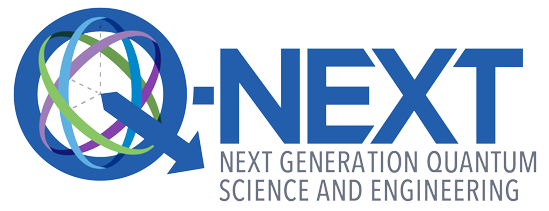by Mark Eriksson

As its name emphasizes, the Materials & Integration Thrust (M&I) develops, characterizes and improves materials with a special focus on integration to enable a wide range of goals cutting across nearly all of Q-NEXT. Materials targets in M&I range from the atomic scale – individual molecules, dopants and defect centers that couple strongly to optical photons – to films and interfaces for superconducting and silicon-based qubits, which enable dense integration and operation in the microwave frequency range. The research is unified by a focus on improving critical metrics for quantum coherence and measurement fidelity not in isolation, but simultaneously and in the environments required for function. That integration is key for achieving Q-NEXT’s overarching goal: the distribution and use of entanglement for quantum science and technology.
This emphasis on integration is exemplified by an M&I project led by Alan Dibos and Supratik Guha at Argonne National Laboratory and the University of Chicago developing a quantum memory operating at telecom wavelengths. Using erbium-doped oxides, this project focuses on improving coherence of erbium defects in oxides while integrating those defect centers into nanophotonic devices to couple to optical fiber. This integrated memory module connects the M&I thrust to our partner thrust area of Quantum Communications and is one of numerous connections between M&I and the other Q-NEXT thrust areas.
M&I materials research extends across wide length scales. At the molecular scale, M&I researcher Danna Freedman is collaborating with Q-NEXT Director and PI David Awschalom to understand how synthetic chemistry can be used to design and build molecular qubits for quantum sensing from the bottom up. And from the top down, cleanroom-fabricated superconducting qubits, in collaboration with the Quantum Foundries Thrust, and silicon-based quantum dot qubits, in collaboration with Intel Corporation, will be developed in a new Q-NEXT dilution refrigerator to be sited at the University of Wisconsin-Madison this autumn.
Together, this and other M&I activity is focused on the core goal of improving the utility of quantum coherence and entanglement by maintaining those quantum attributes in fully integrated quantum devices and systems.
Mark Eriksson is the Q-NEXT Materials & Integration Thrust lead.
This work was supported by the DOE Office of Science National Quantum Information Science Research Centers.
